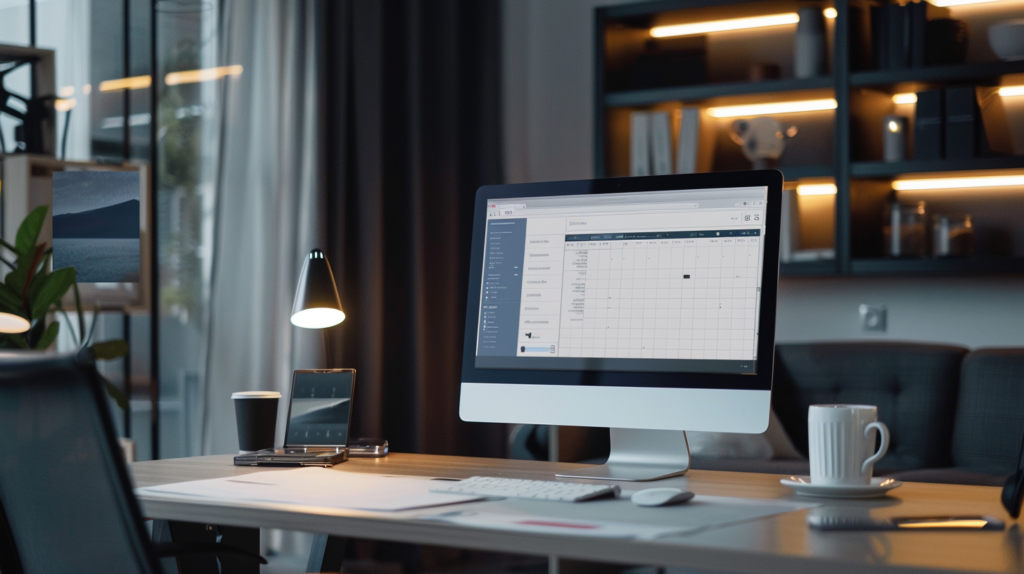Mastering the Art of Being Time-Efficient

Understanding Time Efficiency
In today’s fast-paced world, being time-efficient is not just a skill but a necessity. Understanding what it means to be time-efficient involves recognizing the value of time and using it wisely to achieve the best possible outcomes. Time efficiency can be defined as the ability to accomplish tasks and reach goals with the least amount of wasted time and effort. For companies like Deskcove, focusing on time efficiency is crucial for maintaining productivity and achieving business objectives.
Being time-efficient doesn’t just mean working faster; it means working smarter. It involves prioritizing tasks, eliminating distractions, and finding the best ways to use your time. Time efficiency is about creating systems and processes that allow for the maximum amount of work to be done in the least amount of time without sacrificing quality.
By understanding and implementing time-efficient practices, individuals and organizations can enhance their productivity, reduce stress, and create a more balanced work-life environment. This is especially important for remote workers, where managing time effectively can be more challenging due to the lack of a structured office environment.
Strategies for Becoming More Time-Efficient
Becoming more time-efficient requires adopting specific strategies that streamline work processes and reduce wasted time. Here are some effective strategies to consider:
- Prioritize Tasks: Start by identifying the most important tasks that need to be completed. Focus on high-priority items first to ensure that critical tasks are addressed promptly.
- Set Clear Goals: Define clear, achievable goals for what you want to accomplish. This helps provide direction and motivation.
- Use Time Management Tools: Tools like Deskcove can help track time, manage tasks, and provide insights into how time is spent, allowing for better planning and efficiency.
- Eliminate Distractions: Create a work environment that minimizes distractions. This could involve setting specific work hours, turning off notifications, or finding a quiet workspace.
- Delegate Tasks: Delegate tasks that can be handled by others to free up your time for more important activities.
Implementing these strategies can lead to significant improvements in how time is managed and utilized, leading to greater productivity and less stress.
Tools to Enhance Time Efficiency
Leveraging the right tools can greatly enhance time efficiency. Here are some tools that can help manage and optimize time:
- Time Tracking Software: Tools like Deskcove allow you to track the time spent on various tasks, providing valuable insights into your work habits and helping you identify areas for improvement.
- Task Management Apps: Apps like Trello, Asana, and Todoist help organize and prioritize tasks, ensuring that you stay on top of your workload.
- Calendars and Schedulers: Using digital calendars and schedulers can help plan your day, set reminders, and ensure that you allocate time effectively for different tasks.
- Automation Tools: Tools that automate repetitive tasks can save a significant amount of time. For example, email automation tools can handle routine communications, freeing up time for more important activities.
By incorporating these tools into your daily routine, you can enhance your time management skills and become more time-efficient.
Benefits of Being Time-Efficient
Being time-efficient offers numerous benefits, both personally and professionally. Some of the key benefits include:
- Increased Productivity: When you manage your time efficiently, you can accomplish more in less time, leading to higher productivity levels.
- Reduced Stress: Effective time management reduces the pressure of meeting deadlines and juggling multiple tasks, resulting in lower stress levels.
- Improved Work-Life Balance: By being time-efficient, you can allocate time for both work and personal activities, leading to a better work-life balance.
- Enhanced Quality of Work: Efficient time management allows for better focus and concentration, leading to higher quality work output.
- Greater Job Satisfaction: Achieving your goals and completing tasks on time can lead to a greater sense of accomplishment and job satisfaction.
Overall, being time-efficient can lead to a more fulfilling and balanced life, both at work and at home.
Time Management Techniques for Improved Efficiency
There are several time management techniques that can help improve efficiency. Some of the most effective techniques include:
- The Pomodoro Technique: This technique involves working in short, focused bursts (usually 25 minutes) followed by a short break. This helps maintain concentration and prevent burnout.
- The Eisenhower Matrix: This matrix helps prioritize tasks based on their urgency and importance. Tasks are divided into four categories: urgent and important, important but not urgent, urgent but not important, and neither urgent nor important.
- Time Blocking: This technique involves dividing your day into blocks of time, each dedicated to a specific task or group of tasks. This helps ensure that you allocate sufficient time for important activities.
- The 80/20 Rule: Also known as the Pareto Principle, this rule suggests that 80% of results come from 20% of efforts. Focus on the tasks that will have the greatest impact.
These techniques can help you manage your time more effectively and become more time-efficient.
Common Barriers to Time Efficiency and How to Overcome Them
Several common barriers can hinder time efficiency. Identifying and addressing these barriers is crucial for improving productivity. Some common barriers include:
- Procrastination: Procrastination is one of the biggest obstacles to time efficiency. Overcome it by breaking tasks into smaller, manageable steps and setting deadlines for each step.
- Multitasking: While it may seem productive, multitasking can actually reduce efficiency. Focus on one task at a time to improve concentration and productivity.
- Poor Planning: Without a clear plan, it’s easy to waste time. Create a daily or weekly plan to outline your tasks and prioritize them.
- Distractions: Minimize distractions by creating a dedicated workspace, setting boundaries, and using tools to block distracting websites and apps.
By addressing these barriers, you can improve your time efficiency and achieve your goals more effectively.
The Role of Prioritization in Time Efficiency
Prioritization is a key component of time efficiency. It involves identifying the most important tasks and focusing on them first. Here are some tips for effective prioritization:
- Identify Key Tasks: Determine which tasks are most critical to achieving your goals. Focus on these tasks first.
- Use the Eisenhower Matrix: This tool can help you categorize tasks based on their urgency and importance, making it easier to prioritize.
- Set Clear Deadlines: Assign deadlines to your tasks to ensure that they are completed on time.
- Review and Adjust: Regularly review your priorities and adjust them as needed based on changing circumstances and new information.
Effective prioritization can help you focus on what matters most and improve your time efficiency.
How to Measure and Track Time Efficiency
Measuring and tracking time efficiency is essential for continuous improvement. Here are some methods to consider:
- Time Tracking Tools: Use tools like Deskcove to track the time spent on various tasks. This provides valuable data that can be used to identify areas for improvement.
- Set Benchmarks: Establish benchmarks for how long tasks should take and compare your actual performance against these benchmarks.
- Regular Reviews: Conduct regular reviews of your time management practices to identify what’s working and what’s not.
- Seek Feedback: Ask colleagues or supervisors for feedback on your time management and efficiency.
By regularly measuring and tracking your time efficiency, you can make informed decisions to improve your productivity and achieve your goals.
Real-Life Examples of Time Efficiency Improvements
Real-life examples can provide valuable insights into how time-efficient practices can be implemented. Here are a few examples:
- Case Study 1: A remote worker used time tracking software to identify that they were spending too much time on email. By setting specific times for checking and responding to emails, they were able to free up time for more important tasks.
- Case Study 2: A project manager implemented the Pomodoro Technique to help their team stay focused during meetings. This led to shorter, more productive meetings and improved overall team efficiency.
- Case Study 3: A small business owner used task management apps to prioritize and delegate tasks. This allowed them to focus on strategic activities while ensuring that routine tasks were completed efficiently.
These examples demonstrate how time-efficient practices can lead to significant improvements in productivity and overall work quality.
Tips for Maintaining Long-Term Time Efficiency
Maintaining long-term time efficiency requires ongoing effort and adjustments. Here are some tips to help you stay on track:
- Set Realistic Goals: Ensure that your goals are realistic and achievable. This helps maintain motivation and prevent burnout.
- Stay Organized: Use tools and techniques to keep your tasks and projects organized. This helps prevent last-minute rushes and missed deadlines.
- Continuous Improvement: Regularly review your time management practices and make adjustments as needed. Look for new tools and strategies that can help improve efficiency.
- Take Breaks: Regular breaks are essential for maintaining focus and productivity. Ensure that you take sufficient breaks to rest and recharge.
By following these tips, you can maintain long-term time efficiency and achieve your goals more effectively.

